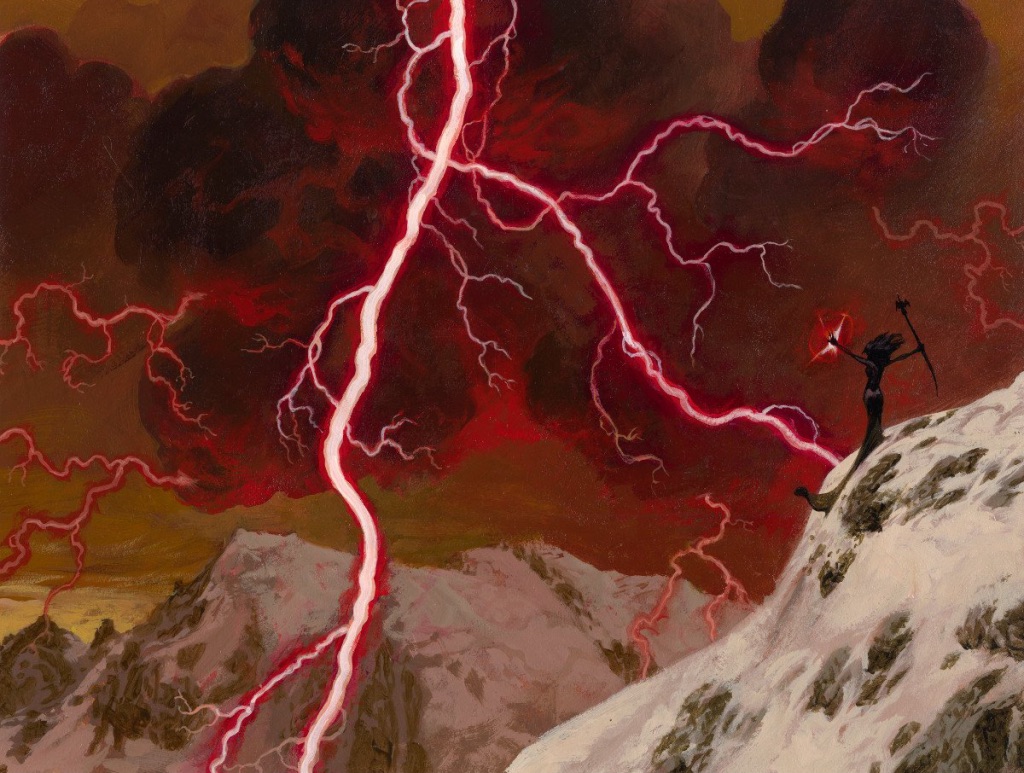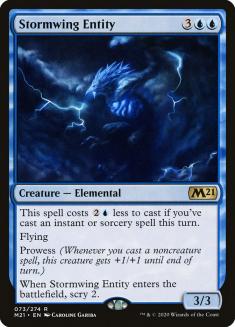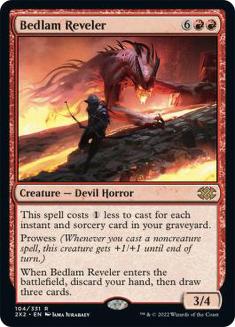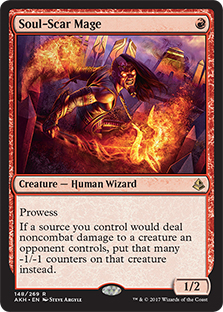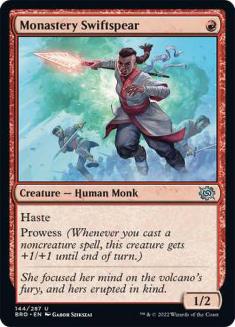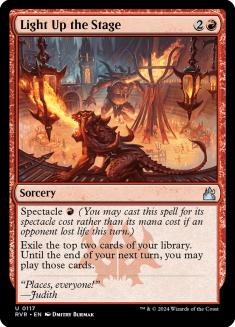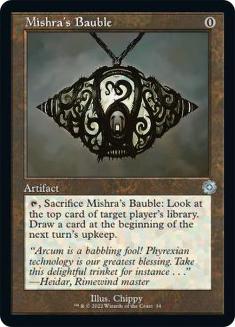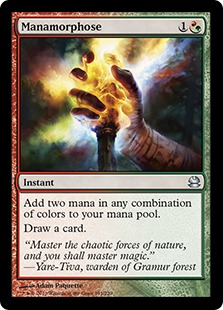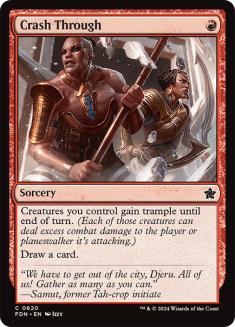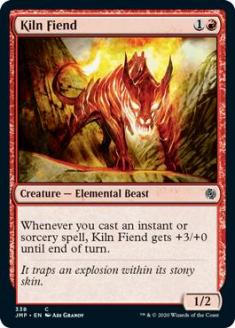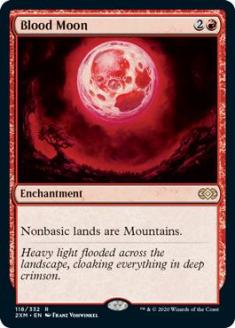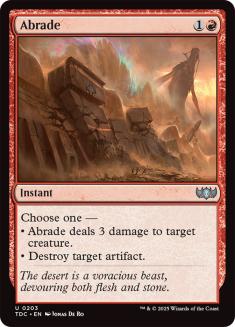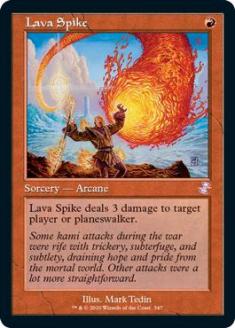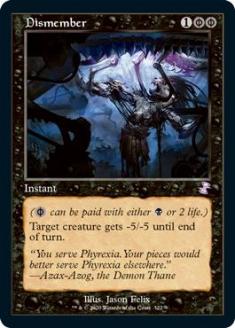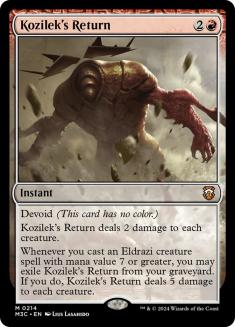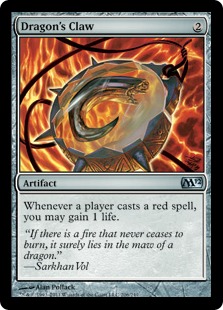Since the banning of Arcum’s Astrolabe, Mono-Red Prowess has risen to be among the best decks in Modern. It belongs to a class of decks I greatly enjoy: easy to play proficiently, but hard to play optimally. You can roll with the punches if you pick up Prowess tomorrow with no experience, but you can also learn a lot from mastering it.
The Splash
Recently, a lot of Prowess lists have been splashing blue for Stormwing Entity and Sprite Dragon. Long story short: Don’t do this. Stormwing Entity demands that you play bad cards like Mutagenic Growth and Gut Shot, cutting Mishra’s Bauble to ensure a high spell count. That is a pretty big downgrade, and I do not think Entity is good enough to make up for it. In addition, Sprite Dragon is not noticeably better than Kiln Fiend in a format as fast as Modern. Further, to afford these questionable additions, you weaken the manabase.
Prowess Fundamentals
The most obvious comparison to Prowess in Modern is Boros Burn. Relative to Burn, Prowess is more explosive, capable of killing the opponent on the third turn with startling frequency. Because of Bedlam Reveler, Prowess also has a lot more reach than Burn, and can often grind out incredibly long games.
What Prowess trades for these is consistency. When playing Burn, almost all your cards are good regardless of what other cards you have drawn and any hand with a reasonable ratio of spells to lands will do pretty much the same thing. With Prowess, you need to draw the right mix of creatures and spells, with some of your cards being even more situational than that. For example, Bedlam Reveler is almost a brick in your opening hand or if you have a spell-light draw. Ultimately, I think the gain in both speed and staying power is worth the loss of consistency, but it is worth calling out the trade-off involved.
Prowess Sequencing
When ordering your spells in Prowess, there are a few things to keep in mind. First, you should generally play Soul-Scar Mage before Monastery Swiftspear. This is so that you can set up a turn where both get to attack, thus allowing you to hold spells for that turn and eke the maximum number of Prowess triggers out of them.
Second, if you are nearly out of cards but light on lands, you should generally hold on to at least one burn spell to enable a future precombat Light Up the Stage for one mana. Light Up the Stage is a lot stronger precombat in this deck in order to line up prowess triggers that same turn.
When playing Prowess, the toughest question you will find yourself faced with is this: You have a cantrip such as Mishra’s Bauble, Manamorphose or Crash Through. Should you cast the spell now, or waste the mana and cast it next turn?
In this situation, you need to determine if you will be able to get more triggers out of the spell by holding it. If I have no other prowess creatures in hand, then getting more triggers later is unlikely so I usually cast the spell. If I have a castable prowess creature in hand, then I tend to slow-roll the cantrip. There are some cases where I go for Crash Through due to being constrained on mana over the next few turns, but this heuristic is generally right.
The other consideration is that hitting land drops is important in Prowess because the deck burns through them — you have four copies of Lava Dart in addition to four copies of Sunbaked Canyon. You also sometimes need to cast Bedlam Reveler for three mana or cast three one-mana spells to present lethal. It is for this reason that I put such an emphasis on lands when casting cantrips. Be aware that if you are in danger of missing a land drop next turn, you must cast and use Mishra’s Bauble this turn to help find that land. With other cantrips, you can wait until the turn you do not have a land to play.
Lava Dart
Lava Dart is one of the most important cards in Prowess deck. It generates multiple prowess triggers without investing much in terms of mana or cards. But losing a land is a substantial cost, so I only flash it back in niche situations. These are:
1. To kill the opponent.
2. To remove a creature, either directly or in combat due to prowess triggers.
3. To allow a precombat Light Up the Stage for one mana.
4. To save a prowess creature from removal.
If you are not in one of those scenarios, it is usually better to save the Lava Dart and your land for later. There are a few exceptions, like when you will never be able to attack profitably again. However, I follow this heuristic upwards of 90% of the time.
Mulliganing With Prowess
In the dark with this deck, I keep one-landers if they have Mishra’s Bauble, a one-drop creature, and a good plan. I keep creatureless hands if they have multiple cantrips, but I mulligan them if I know I’m facing a fast matchup. Additionally, I always mulligan if my hand has four lands or more. Prowess is a deck that requires a critical mass of cards to function. Three spells just aren’t enough.
Decklist and Card Choice Notes
Creatures (14)
Lands (18)
Spells (28)
- 4 Lightning Bolt
- 4 Lava Spike
- 4 Lava Dart
- 4 Mishra's Bauble
- 4 Manamorphose
- 4 Crash Through
- 4 Light Up the Stage
Sideboard

0 Burst Lightning, 0 Wild Slash: I am really not a fan of the Shock effects. They are the worst cards in the deck, and get removed against almost everything for Games 2 and 3 since they are not at a Modern power level. You have enough burn spells with just Lava Dart, Lava Spike, and Lightning Bolt.
1 Bonecrusher Giant maindeck, 2 sideboard: Bonecrusher is great against every fair deck in the format. In an ideal scenario, it trades for a creature, triggers prowess, and then creates a potent threat. Even against combo decks, you never know when you might randomly have a long game or creature-light draw, though those circumstances may not be common. Oh, and did I mention it also randomly helps with cards like Auriok Champion and Kor Firewalker due to the “damage can’t be prevented” clause? On the whole, the Giant is a high-ceiling, high-floor card, so I have chosen to include one in the main. I would not want too many, since enough two-mana Shocks can definitely clog up your draw, but one main with two more in the sideboard has felt about right.
2 Kiln Fiend maindeck, 1 sideboard: I think Kiln Fiend is much like Bonecrusher Giant in that when it is bad it is still fine and when it is good it is amazing. The worst Kiln Fiend will ever be is when it eats a Fatal Push or Lighting Bolt. This exchange trades two mana for one, but is otherwise totally fine. The best Kiln Fiend will ever be is against combo decks, where it generates Turn 3 kills with only a modicum of support. Even against decks like Jund or Death’s Shadow, you never know when they might randomly not have the answer and die on the spot. I do not think having four Kiln Fiends in the 75 would be crazy; I just have not been able to make room so far.
3 Soul-Guide Lantern sideboard: I have seen a lot of Prowess lists still running Tormod’s Crypt or Surgical Extraction and I think both are basically just worse. Soul-Guide Lantern is the best possible sideboard card against Dredge, since it can take out a single Dredger early and nuke the whole graveyard late. Surgical and Crypt can each do only one of those. Lantern is also better than Surgical against Uro, Titan of Nature’s Wrath decks, as the two Uros it handles are at least as many as your opponent would draw in a typical game, but unlike Surgical, Lantern can take out a single Uro and then cycle to shut the door quickly.
1 Kozilek’s Return sideboard: I know I am the only one who plays this card, but hear me out. Kozilek’s Return sweeps up all the small threats from decks like Goblins, Mono-White Tokens, Infect, Devoted Druid, and Humans. Since your creatures have prowess, they will live, other than exactly Kiln Fiend. Return doubles as an answer to Kor Firewalker that does not cost life, and it can be used in combination with Soul-Scar Mage to shrink the opponent’s entire team. On the whole, I am closer to playing two copies than playing zero.
Matchup and Sideboard Guide
Disclaimer: Modern is a very wide format, so covering all the matchups is impossible. I will, however, include a few so you get a sense of the sideboard plan.
VS Amulet Titan
Out:
In:
This is not a matchup where you are ever going to win the late-game, so do not try. Just apply light disruption by removing their mana creatures and Amulet of Vigor, and then aim to kill them on Turn 3 or 4. Never keep a hand without a threat.
VS Jund
Out:
In:
Even though this is a grindy matchup, I like to take a page out of Patrick Sullivan’s book and go down on Light Up the Stage because I bring in so many situational cards. Honestly, I think Jund is one of Prowess’s best matchups and straightforward to play. Just don’t get greedy and slow-roll your Bedlam Revelers or their hand disruption will punish you.
VS Boros Burn
Out:
In:
Against Burn, your plan is to remove all their creatures, turn the corner hard, and win quickly. I like to have some Abrades as supplemental removal spells, but they cost two, so don’t go overboard. Do your best to have a plan for Kor Firewalker and try not to take too much damage from your lands.
VS Goblins
Out:
In:
Against Goblins, and most other creature decks, you play a midrange role. Keep attacking while you remove their threats, and then pull ahead with Bedlam Reveler, Bonecrusher Giant and Light Up the Stage. Against Goblins specifically, try to leave up instant-speed removal to protect your creatures from Munitions Expert.
I highly recommend playing Mono-Red Prowess in your next Super PTQ or Magic Online League. May your opener always contain Manamorphose.

